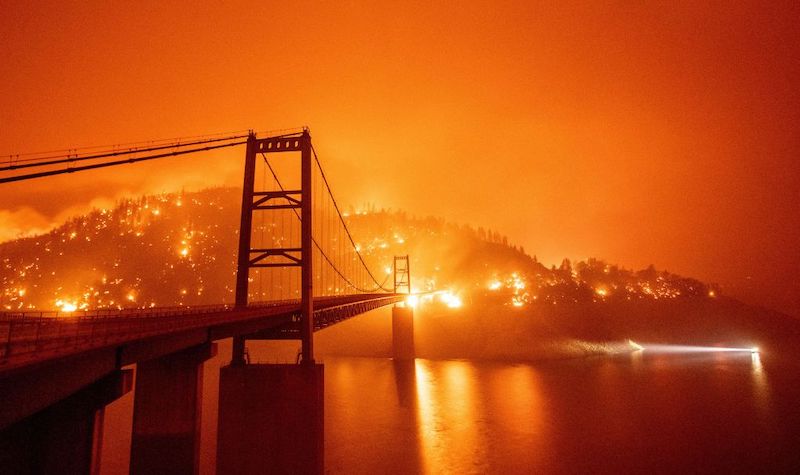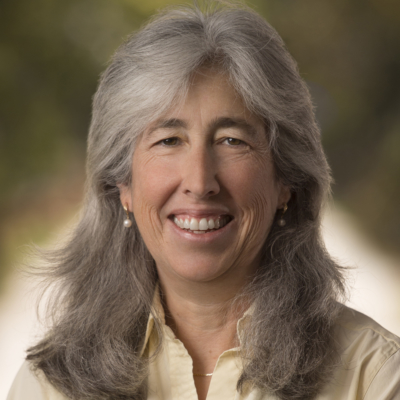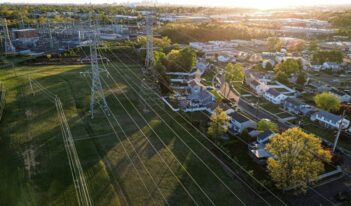
As millions of acres burn along the West Coast, the United States must improve the way it manages forest fires.
The West Coast is on fire, quite literally. From the dry chaparral scrublands of Southern California to the grass and oak woodlands of California’s Wine Country to the lush coniferous forests of Oregon, Washington, and Colorado, late summer and early fall wildfires are setting records for their scale, intensity, and destructiveness. In California alone, some 4 million acres—more than twice the all-time record set in 2018—had burned by the start of October, only partway through the traditional “fire season.” And the fire season itself is lasting longer.
The region is no stranger to wildfire. Long before humans altered the landscape, western lands were adapted to a seasonal fire regime. But changing climate patterns are making these ecosystems hotter, drier, and increasingly vulnerable to wildland fire.
Stir in a power line mishap, a careless campfire, or a rare summer electrical storm, and, voilà, a recipe for disaster emerges, especially at the urban edge where human development meets wildland vegetation. Year after year, Americans collectively wring their hands as lives are lost, property is destroyed, and communities are fractured. With this changing climate here to stay, sadly, what can and should America be doing?
The first thing to understand is that wildfire poses different challenges in different places. The most problematic wildfires occur where manmade structures border, or intermix with, wildland vegetation—commonly called the wildland-urban interface. Most of the lives and property lost to western wildfires in recent years occurred at the wildland-urban interface. Wildland fire in remote forests, on the other hand, generally poses little direct risk to society, although it can have incidental impacts on local air and water quality. A one-size-fits-all prescription is not the answer.
Start with the easier problem: forestlands. The most resilient forests are those with a mosaic of different age-class trees and open spaces. Natural fire regimes maintain this resilience by periodically burning through understory vegetation, opening up the forest floor and fostering new seedling growth. Anyone who has ever tried to burn a freshly fallen tree branch in a campfire knows that the bark of pines, firs, and sequoia is quite fire resistant. This thick bark and the high canopy of mature trees allow them to survive these periodic ground fires. And these surviving large trees, in turn, are critical to keeping the forest cool and moist.
Widespread scientific consensus indicates that poor management over the last century has made remote forests more vulnerable to wildfire. Historic fire suppression and unsustainable logging practices have resulted in too much vegetative understory, too many even-aged stands, and too few resilient old-growth trees that protect forests from catastrophic wildfire.
Climate change has only exacerbated these vulnerabilities: As the climate becomes hotter and drier, heat- and water-stressed trees more easily succumb to pests such as bark beetle and more readily burn during a wildfire event. The result is what climate scientists call a positive feedback loop—a vicious cycle where high-intensity fire in climate-stressed forests releases carbon stored in living trees to the atmosphere, thereby hastening even more global warming.
To bring these remote forestlands back to health, America needs to change the way it manages them. Historically, management of both public and private forests has been driven primarily by logging of the large, mature trees that are most profitable to the timber industry. Today, such traditional logging will only worsen the problem in most forests. Alternative approaches such as controlled burns—which indigenous people have used with great success—and manual clearing of overly dense understory can reduce fuel loads in a way that promotes forest mosaics.
But such labor-intensive activities are expensive. Realistically, resource-constrained forest management agencies lack the capacity to implement purely science-driven forest health initiatives at a scale of over tens or hundreds of millions of acres of public forestlands—nor is doing so necessary. Public foresters should prioritize the riskiest areas for intervention—for example, those parklands that support significant public use or built infrastructure—and leave other remote forests to burn when wildfire strikes and then heal and recover on their own. That means a significant change in the way state and federal forest agencies and the public think about fire suppression.
The harder nut to crack is fire at the wildland-urban interface. Many communities are looking closely at their options, but no silver bullets exist. A top priority is “hardening” structures against wildfire—using fire-resistant materials, designs, and placements for roofing, walls, windows, decks, vents, and propane tanks, among other resources. Local building codes should be upgraded to require these well-established practices for new development; retrofitting existing structures, on the other hand, can be prohibitively expensive or impossible.
Another best management practice is routine clearing of vegetation around homes and around vulnerable communities at the wildland-urban interface. This practice, too, takes resources that smaller communities may lack and diligent upkeep that rural residents may resist.
Even if the United States implements such measures across the board, however, they cannot, standing alone, ameliorate the wildfire threat that many urban-edge communities face today. Tile roofs, stucco siding, and dual-paned windows will not avoid tragedy when a wildfire roars over the hill into a subdivision carved from the coastal shrub or embedded in a pine forest.
The longer-term solution is to move—and keep—people out of harm’s way. The market could help drive this solution as fire insurance becomes unavailable or housing prices drop to reflect fire risk. But as a society, the United States has a history of bailing out those on the losing end of these market forces. When private insurers decline to renew earthquake or flood policies in high-risk areas, the federal government or states often step into the breach with public safety net programs. These governmental responses feel morally right, but they create the “moral hazard” that homeowners will simply rebuild in the same fire-prone location.
One emergent idea in California is to allow homeowners to port the tax base in their high-risk properties over to new homes in a safer location. In a state where property taxes are essentially frozen in place at the time of purchase—with a small annual increase thereafter—and property values appreciate significantly over time, the ability to rebuild elsewhere without incurring a new, higher property tax base could be a substantial incentive.
Proposition 19, an initiative on California’s November 2020 ballot, made a start at developing this idea, but it had a number of flaws—not least of which is that the same exemption would apply to anyone, in any community, over the age of 55. In that sense, wildfire victims are really a small tail wagging the big dog of a longstanding state tax policy dispute.
But the kernel of the idea behind Proposition 19 is intriguing. How might California and other western states build on this concept? States can certainly play with the tax laws to encourage retrofitting in fire-prone communities. But can we do more? How can public policies encourage those who have not yet been the victims of wildfire to move away from the riskiest areas? Can we restructure tax laws to write off sunk infrastructure costs in fire-prone rural communities without bankrupting state and local coffers?
On the flip side, should these vulnerable communities face much higher fees or taxes to offset the disproportionate burden they place on public fire services? Maybe a combination of carrots and sticks—high fire-service fees, no government backstop for a failing private-insurance market, and relocation tax incentives—could move the needle.
This much is clear: As the impacts of a changing climate become visible everywhere, managing wildfire risks at the urban edge differs little from managing coastal retreat in the face of rising sea levels or the repeat flooding that places such as Miami, Houston, and Norfolk, Virginia, are experiencing. All of these enormous socio-environmental challenges demand the best and most innovative thinking.




